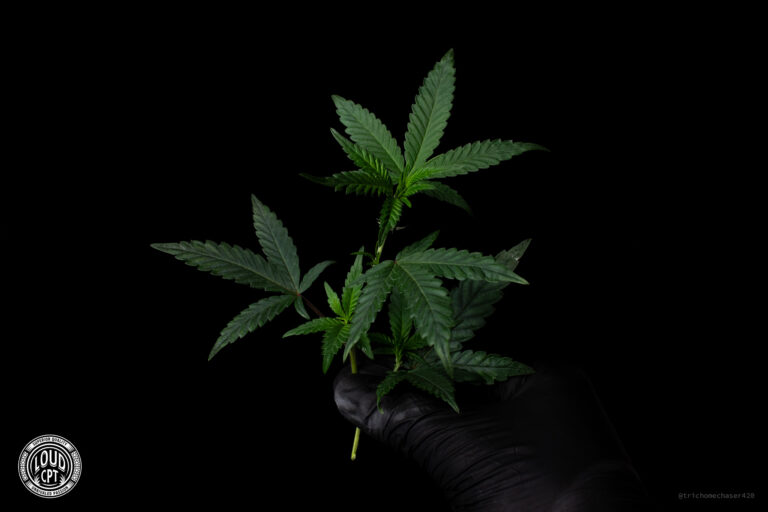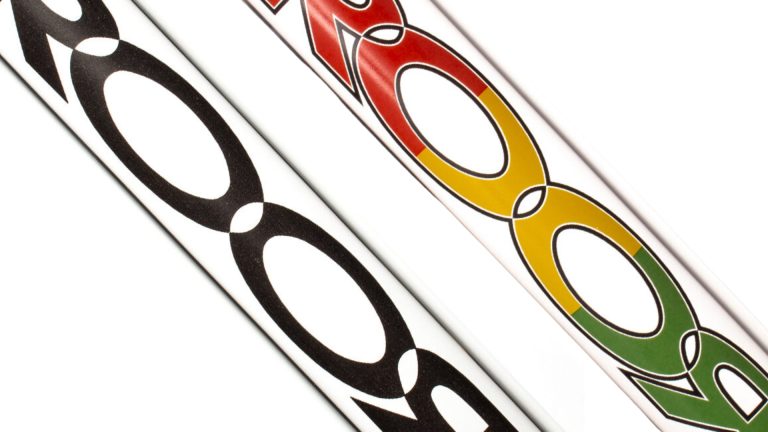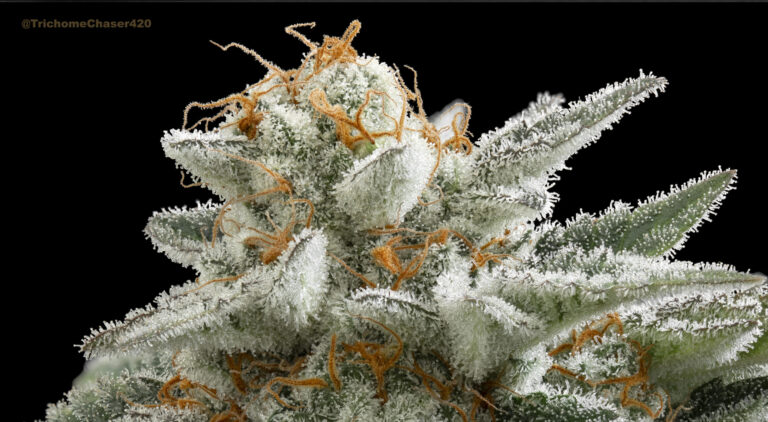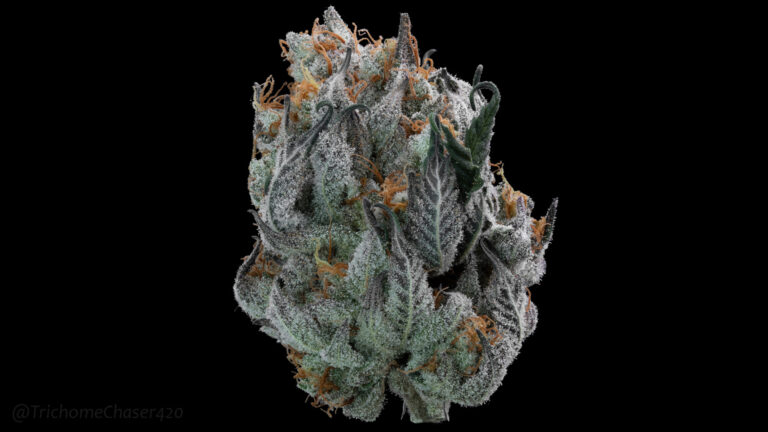Shining A Light On The Craft Underground With Amadeadly Seeds
In this article, we chatted with Bushman Jay, one-half of the duo that is Amadeadly seeds, often considered one of South Africa’s best breeders. We wanted to have this chat with Jay because we’ve been longtime admirers of the Amadeadly approach to cannabis. For Amadeadly, it’s the passion and experience that led to the building of a brand. This stands in stark contrast to many dominant cannabis brands, who are more focused on marketing and returns than they are on the plant itself.
This interview was conducted over several weeks, with back-and-forth WhatsApp messages, which were later transcribed for the article. We wanted to provide a true long-form piece of content that isn’t a condensed overview of talking points but rather gives our guests the opportunity to share their experience, their journey, and ultimately their stories. Because of this, you’ll notice that the article may take small tangents in the discussion. This is unedited for the sake of providing nuance.
Because of its length, we’ve broken the article into accordions so you can more easily navigate between questions. Nevertheless, this isn’t going to be your typical short-form content piece. We recommend getting a bit baked and enjoying the journey.
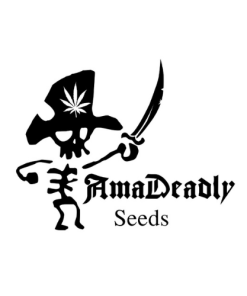
Give us a little bit of history around Amadeadly. When did you start it? What were you looking to achieve with it, and did it form initially as a breeding project?
As far as I can remember, I have always wanted to spread the ganja. Making my own crosses happened organically, like making a cocktail, like coming up with a Mojito, creating something new. I have been experimenting and learning a lot.
15 years of doing that, and I accumulated a large selection of seeds, a large vault of stuff that I’ve created. I realized that even with every mountain on the earth, I’d have had a hard time growing out all my seeds!
Fast forward to 2018. Following the Constitutional court judgment, we started to see a lot of people looking for seeds. That’s when we started handing out seeds, mostly to pensioners at first, so that they could grow their own medicine, make their own oils, etc.
At the time, we didn’t have a name. We weren’t Amadeadly. We were just giving away loads of seeds, like Johnny Fucking Appleseed!
Soon enough, word traveled, and everyone was always asking me for seeds. We ended up sending a load of packs through couriers. And giving all that seed away like that was a revolution for me. But it came to a point where I was sending out so much that I was spending a lot of money just through the courier fees involved. And then all the time spent counting and packaging beans.
So at one point, I started to ask for donations in exchange for the seed, and in most cases, people were more than willing to make a donation for the seeds. And then I put a price on them that I thought was fair. I had so many positive responses at that time. You know, I’m my own worst critic, and there’s a lot of stuff that doesn’t get released because I’m not entirely happy with it.
It ended up becoming so complicated to keep track of everything that we needed some kind of way to consolidate it all. So I created a Facebook page where I could run stuff from, and that was essentially the start of it becoming a brand, as it were.
When I started breeding, I did it for myself and never focused on money. I didn’t even dream that I’d end up in a position where I was selling seeds. It fucking blew me away – and still does!

And when it comes to the name. It comes from back in high school, I was moving a lot of weed from Swazi with a buddy of mine, and we got in this stuff called “Swazi Amadeadlies.” It blew my mind at the time; I thought it was so cool – kind of like those Cartel guys who put the scorpion on their shit. This goes back to the early 90s.
And this Amadeadlies stuff was really strong, some potent shit – looking back now; it was probably a hybrid of some sort.
So I thought fuck, just as a joke, let’s just put that name out there as Amadeadly Seeds. And truce God, the guy who did the original weed contacted me and was freaked out about the whole thing. He had beef with us using that name. It almost came down to a “meet you in the streets” kind of thing, and we eventually did meet.
We explained to him that we’re not Amadeadlies but just Amadeadly Seeds. We mentioned that we were giving homage to the first people around here branding their cannabis. You know, breeding and branding it.
So after a long night chatting and smoking, this guy Peter and I eventually saw eye to eye.
That’s how Amadeadly Seeds came to be.
It’s very important to preserve the old-school stories and the culture and to bring it out, even through breeding projects. Just like with the seeds, someone needs to preserve the stories and the culture in the same way that one preserves heirloom genetics for future generations. It’s like a duty for the plant.
I feel like it is all currently falling into different hands – but that’s also part of the story, you know?
But yes, I think that corporate cannabis should not become the whole story, you know. We need people documenting the old stories and bringing them to light. We need an accurate historical account of the craft and artisanal growers and a place for them. Otherwise, the entire cannabis culture is at risk of being sterilized by corporate cannabis, which would be a very negative thing, a loss in terms of actual human history at large.
Part of our Amadeadly vibe is to try and preserve those stories and to encourage people to be brave and come forward with their own stories. Hopefully, society can look at rewarding people for doing things the right way with the right approach instead of rewarding people for the money they have or their social media appeal.
I was doing some work with some corporate growers, ex-bankers, and things, getting into the cannabis game. And they’ve got investors and grows – but they’re quite new to the game and don’t have the culture. They’ve never smoked out of a chillum, they’ve never made ice water hash, that kinda thing. Their weed is pretty, and it sells. You know it’s pretty good for hydro, but what’s missing is definitely the culture, the soul, if you will. I asked one of the guys if he knew the strain, Jack Herer. “Yeah yeah yeah,” he said. But he didn’t know who Jack Herer was or anything related to the history of the name. And to me, that kinda stuff is very important, you know? I think it’s essential to have an understanding of the culture and to actively work at preserving it.
When it comes to international breeders, I go through phases, I buy a lot of beans. I’m looking for stuff to add to projects I’m currently working on or hunting through, and stuff that can keep up with the times and what people are looking for, in terms of flower.
I’m looking for authenticity and breeders putting in the hard, good work and making solid lines, breeders lines, solid stuff that feel like foundation strains. Stuff that I can breed with, things for myself, solid things that I can stick out in a field even. Authentic, high-quality breeding.
I follow a lot of breeders, do some research on their work, the guys that have been doing true breeding lines and working on solid strains, and isolating special traits.
I try to support local breeders too. I’ve got a big vault of local stuff just waiting to be popped and hunted.
I avoid the white label genetics. I don’t believe in the capitalist approach to commoditizing the breeding and the seed.
When it comes to lines I’ve worked on or that I’m still working on, it’s hard to pick one favourite. Some of those have been worked on for more than five years, while others were almost accidental and just came out amazing.
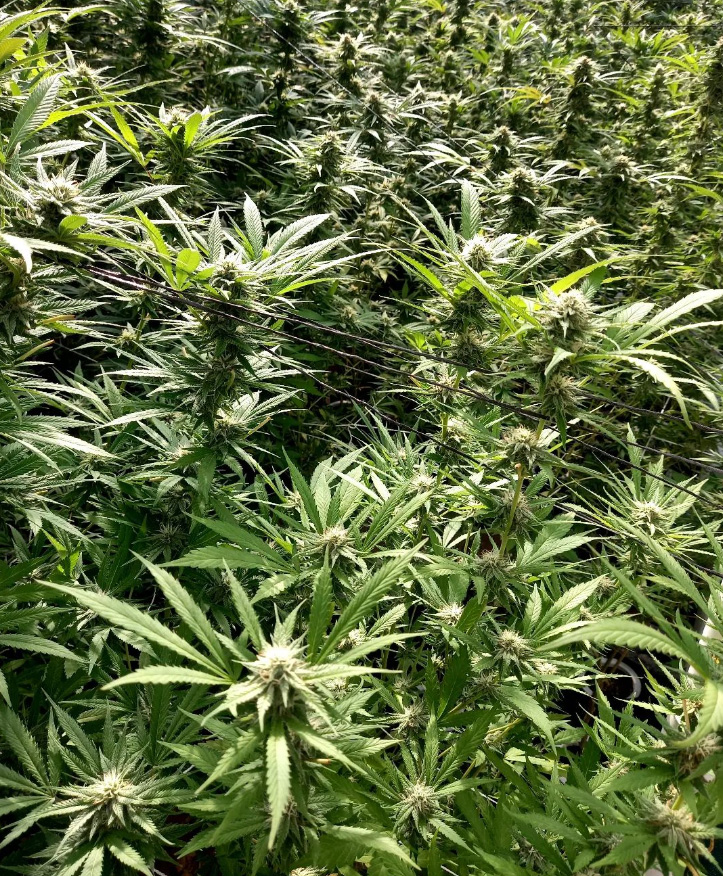
Off the top of my head, there’s the Ambrosini Haze, which was Bubba Kush crossed with an heirloom Apricot Sativa that we’d been playing with for years. She came out like this outstanding Apricot Haze. We named her in honour of the Dr. Ambrosini, and his contribution to cannabis in South Africa. We still have a select cut, which we give out for free, in memory.
And then there was also the White Trash which was quite mind-blowing. That was a Suicide Cheese IBL that we made with Kaliman. We knocked it up with an Appalachian Thunder Fuck from Bodhi. It was quite a mind-bending plant! It had heavy trichome production with the taco leaves and white/minty green look to her. Interesting menthol cheese terps. Powerful stuff. We named it White Trash, and it was a really nice strain.
There’s also the Kosher line that we’ve been working on for like five years. We’re currently working with the BX3. That Kosher cut, from an older DNA pack, was a really good cut that was given to us by some Joburg growers- those guys were ruthless in their pheno selections. This girl has a “pink sweet” terp to her, a mind-blowing plant to smoke – but a very challenging plant to grow no matter how you treat it; it could easily go the other way and become hash weed, you know – just fucked.
So I’ve spent a lot of time with her making her easier to grow and have better structure. That project has already taken me about five years, and I even lost the original cut at one point. Thankfully a buddy of mine down the coast had a cut of her, and I only recently got her back.
It should be a bit easier now that I already worked her a bit, a bit less time selecting the males, you know. While still trying to match up the male expressions with the original mother’s expressions. I’m very grateful to have that project back on track, and we should be doing some drops soon of that project with the BX3.
We actually released some limited packs of the BX2, which some lucky okes got hold of. You still see a little bit of variation. The outcross was Starfighter F3, and you still see a tiny bit of that coming through on the BX2. But I’d say that she’s 90% there and just needs a little cleaning up now.
I’ve been working on a number of OG projects for almost ten years now, trying to create a South African OG version. I’ve worked with many of the older OG lines. I had some OG18 and some Skywalker OG, which were really nice, and some SFV-type stuff, Tahoe, etc. A lot of the stuff came out a bit too garlic and oniony.
With the Bricktop, I was working with the Deadhead OG/Stardawg stuff, crossed with some Headband/OG. It was expressing quite a lot like the SFV, which I really like. I always feel like the SFV-type OGs gave a lot of power to things and came through with a sour gas, not as piney as some of the other OG stuff I had worked with. I quite liked the high that it came with. It was a little Headband/Sour Diesel kind of vibe. Many people grew it out and really liked the strain.
And then, with version 2, I wanted to take it back to that super gas. I used a Face Off OG that I had crossed onto an old Kush.
About that old Kush- I had worked this Highveld Kush thing, that was some old school Pakistani, Bubba Kush-like kind of stuff. It was really nice, though. It had that real old-school, ‘charassy’ kind of Kush vibe to it. So I crossed that old Kush with a Face Off BX2 male from Archive.
Then, I crossed that into the Bricktop to create version 2. And I really like what the Face Off brings to it. It has that face-melting kind of trip, potent af. I may work that line again in the future, perhaps a version 3 sometime, and I want to take it more in the Face Off direction.
Off the top of my head, I wouldn’t mind giving that Hitler cut a run. With all the controversies around it, it’s also a bit of a legendary South African cut. And then there’s also the I&J that I’ve heard of. I like to run those lines that get a lot of hype and controversy around them. I like to see what I get out of them when I run them my way.
And then recently, I got the Sherbinski cut of the Sunset Sherbet – supposedly. I know it’s a very covert, underground cut, and I’m very grateful to be giving that a run soon. I’ll be giving her my best.
Unless you’re running proper DNA tests on the genomes, the only way to do it is with trial and error. What I do is that I try and look for certain traits in a line and then try to bring those traits out from the male’s side. So I’ll look at his expressions, things like leaf morphology, stem rub, structure, and even stem colouration, and then make sure what he expresses represents what I’m looking for.
Then, the only true way to select males is by actual trial and error over time. When I select a male, I drop him onto about 5 to 10 female cuts that I’ve bred with several times. And since I know what those females give and take from the table, it will be easier for me to see what the male is bringing forward. So the next season, I’ll run out as many of those seeds as I can, and from there, I’ll get a better idea of how the male breeds. How dominant he is; if he’s overpowering things too much. But sometimes you want that. every breeding project is different.
I give the males a lot of my attention, studying every bit of them I can. Still, though, that’s not going to guarantee that you’ll be bringing certain traits. So, after I’ve selected a male to try, I’ll run through those seeds, and only then I’ll see whether the line came out as I wanted or not, and then choose whether or not to continue working with that male and, subsequently, that line.
This whole process takes quite a few years, but I’ve got my projects overlapping with each other. So the stuff that I bred two years ago is currently being tested, and then they can be released.
My rule #1 is “keep it simple.” Keep in mind that the plant grows perfectly without human intervention and has been doing so for thousands of years.
Rule # 2 would be to apply the principles of biomimicry. Nature’s works are perfect and can be copied.
And rule 3 would be to spend a lot of time in the garden. It comes down to trying to understand the language of plants. If you can learn to speak the language, the plants will tell you what they want.
I remember to this day, the first time I ever saw a real ganja plant growing. I was really young. I used to hang out with some older kids in these townhouse complexes where I used to stay. We had a little BMX gang, you know, we were naughty fucking kids. This older friend once took me down to the river and showed me this ganja plant.
The first time I saw the leaf of that plant, it struck me deep inside. It was almost spiritual. To me, it was God – or whatever you call a God or Goddess. And it represented rebellion and something that’s taboo. And ever since that day, I’ve always had a very spiritual connection to the plant.
I feel it’s in my DNA, and people have that feeling in their DNA. I feel like it’s epigenetics from thousands of years ago. And I believe that a bunch of us came from an ancient tribe or tribes that would work for this plant, protecting it and taking it along the ancient trading routes, you know. So, our DNA remembers.
I feel like what we’re witnessing at the moment is a lot of hybridization, causing us to lose a lot of true landraces. These growers are often just looking to keep up with the times and the market, and we’re not fully aware yet of the extent of the loss.
A handful of guys out there, including myself, have been (for many years) working on landrace preservation projects. Selecting certain plants that express special traits and carrying those cuts and seeds.
But that’s just a handful of guys doing that, and if more people don’t preserve these genetics, I think they’ll be lost to “evolutionary progress.”
I heard something – which makes a lot of sense, but I’m not sure is true: the idea was that if you take all these modern hybrids and throw them outdoors into, let’s say, a field in Malawi – Over time (years and years), it will all end up just going back to becoming “Malawi” as it adapts to that environment. I probably won’t be around long enough to test this theory.
We got into American genetics because we’ve always been in discussions with breeders from all over the world.
The guys in the US were doing more BX work and taking bigger risks when it came to craft breeding. They also seemed to give more thought to provenance and the craft aspect of breeding.
Europe was going just to white-label fem and auto, and I saw it as a way for the seed bank guys to control the work the breeders were doing.
Now the industry has changed a lot, and a lot of the guys in the US have also sold out in their approach. There are still craft breeders out there, though, in America and Europe. And once you have an understanding of breeding, it makes it easier to tell who is faking it.
Editor’s Note: The question should have better specified the topic of pure OGs.
I wouldn’t say that South Africa is sleeping on the OG, as it forms the backbone of a lot of what people are smoking these days. You know, that gas and power bred with some fruity Sativa or something. Even the backbone of Cookies is OG. And then, of course, OG stems from Chemdog. Those genetics are in a lot of stuff.
Many guys don’t look into the strains they’re smoking or breeding. They often just look at the parents or maybe the grandparents – but they won’t go deeper. When breeding, I think it’s very important to go deep into the lineage and understand what one is working with. That’s one of the essential fundamentals.
One of the best OGs I’ve smoked was some OG18; it had that pine/lemon terp, and when I first smoked that, it took me right back to when I was five. My grandparents passed away a long time ago, but this strain took me back to when I was in my grandfather’s bar, and I could smell the old cupboards, the lemon, and pine. And that was the first time I realized how terpenes could transport you back to a particular memory.
That in itself can be really healing. You know, recalling memories and working through trauma. And that’s just another way in which this plant is medicinal.
Yeah, we’ve worked really hard at trying not to lose our cuts, and some of the cuts we’ve had for 15 or 16 years, and we’ve managed to preserve them. But we move a lot, so we have lost some cuts over the years, unfortunately.
One that really stands out to me is the Trinity cut that we had. When you lose one of these girls, it’s almost like losing a lover or a family member. You mourn their loss, and sometimes you spend your life mourning it. I even named my daughter after the Trinity cut that we had.
Another really nice one was a Hog cut that we had. The flower was quite popular in Cape Town at one point, quite a number of years ago now. But the Trinity is the one that hurts the most.
I have always had inside info into what was going on in the scene there through the international breeders I’ve worked with. My partner Bee used to run the French online department for Seedsman. That also gave us good insight into what was going on behind the scenes, and a lot of the Dutch breeders sold out to the pressures of capitalism.
A little while back, maybe six years back or so – when everything started becoming that Spanish Walmart, bulk breeding type work, I lost interest in Dutch genetics apart from just a couple of small pockets of craft breeders.
The Dutch trying to emulate the US market was compensating for the way they were falling behind in the market, comparatively. But at that point, I feel like they were already captured by corporate, trapped into mass production , and it’s too late to go back on that. It’s why I don’t really buy Dutch genetics these days, as most of it is just corporate mass-produced.
The Raskals’ Fire OG had an almost blank White gas OG profile to it in a pleasing way. It’s hard to explain, but it smoked like a clean gas terp. That’s what I liked about it, that it was almost like a blank canvas for breeding. And it had a lot of power, really high THC – super strong. I actually still have that cut.
The original mother was quite finicky when I got her, so when I bred the Bushfire, I was trying to make that genetic hardier and easier to grow. That Bushfire project took a few years to come up with something similar to the Raskals’ OG, but with a better structure and easier to grow.
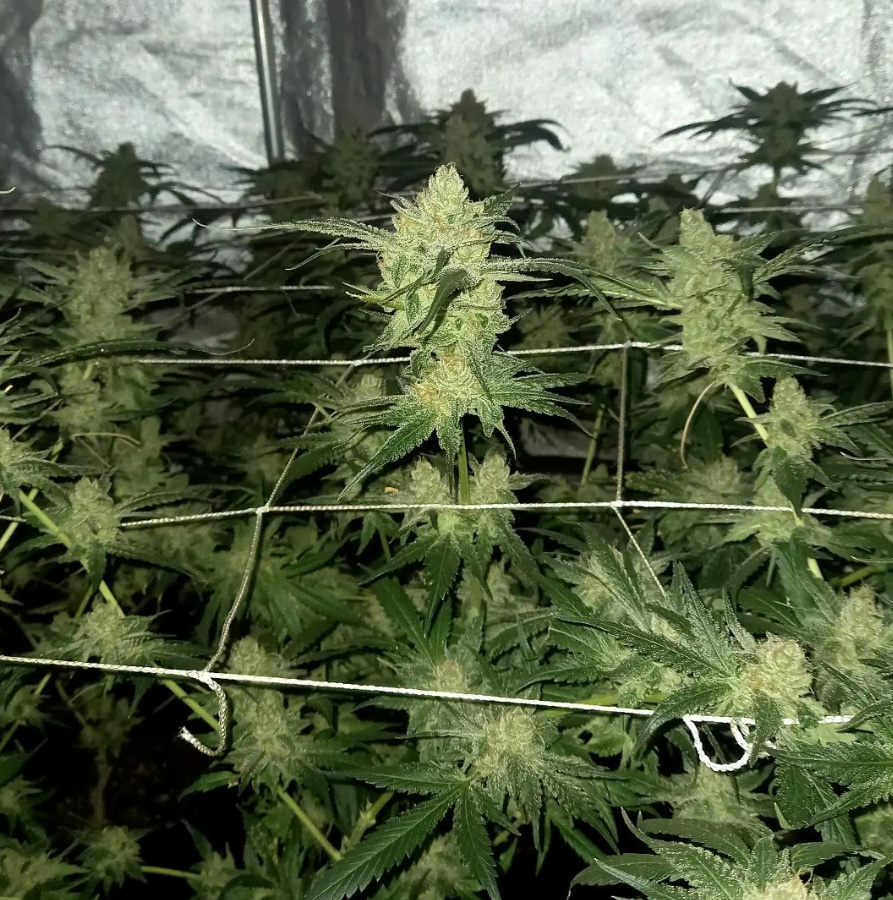
I’ve done quite a bit of fem seed work before, even for some of the international breeders. I’ve also done a few of my own fem drops. There may be more fem drops in the future. When my son died, I shut down many breeding projects. And that’s been about one and a half years now.
I actually haven’t considered restarting any of my old breeding projects, and I’ve got a number of actual projects that are already three, four, or maybe even five years in the making. So at this stage, I’m not even sure if I’ll finish those projects.
Legacy is a crazy concept. After my son died, I couldn’t even look at my seed vault for four or five months. Recently I went and had a look through some since I was giving some to a friend, but at this stage, I’m not even sure if I’ll get back into breeding seed again. Since I was always breeding for myself and not for the market, I was never driven by markets to breed seed.
At this stage, I can’t predict the future – but I’ve actually stopped all seed sales on my side. I’m not even giving it away, even though people often ask. But if I start breeding again, you could expect some fem lines.
It’s a bit easier to create fems than solid regular lines, as you can see what you get a lot easier. But yeah, I’m not even sure if I’m going to breed more or release anything from my vault. We’ll have to see.
This is a difficult question and one that we struggle with a lot.
Over the years, my partner and I have worked really hard at becoming invisible people, mainly to avoid dealing with all the typical bullfuckery of people and to stay away from the traps and fallacies of the system. Growing cannabis allowed us to go kind of hide in the woods, you know.
It’s not really by choice that we emerged from the shadows. We’ve almost been forced to put our necks out there and expose ourselves to an extent because of the ways of legalization. This has been difficult for us, and yes, it is a big juggling act. We’re basically on the endangered species list – a dying breed.
Over the last 4 or so years, we’ve done a lot of work to build teams and open ourselves up in many ways. For example, we opened our one farm to quite a few people to try and see how we could work and interact with teams. It hasn’t always been positive.
So we’re still looking for new ways to work and bring stuff forward without putting too much at risk. We are finding ways to grow our brand through legitimate channels, which is in the process.
Bee and I started out being best friends and always shared a love of cannabis. At some point, she left the corporate environment to work on the grow full-time with me. We’ve been growing together for about 17 years now and married for 15 – still going strong.
We complement each other in the work and contrast each other in our tastes- that contrast is an essential part of Amadeadly.
She comes with that French touch, let’s say. I think that’s an asset, and I’m very proud of her. She’s got excellent taste and a nose for subtleties.
She’s a machine, and I couldn’t have anyone better by my side. I’d even say she’s the best female grower in South Africa, hands down. Even in crazy harsh conditions, she’s been able to pull off amazing results.
I’d like to mention Dr. Oriano-Ambrosini. He was the first guy to take the concept of cannabis as a medicine to our parliament. He opposed the way that cannabis users were seen in the eyes of the law, being bundled with those with tik and crack habits. He held the view of cannabis as medicine, which is very relatable to us. It was revolutionary to see this view taken to parliament. Dr. Ambrosini was the first guy to stand up in parliament and say something.
Ja, I’ve been doing Southern African landrace preservation for many years. I’ve actually got a large collection of landrace seeds from across Africa. All the way up to Ghana, Zambia, Malawi, Mozambique, Botswana, and Swaziland. I’ve selected a few very special phenos over the years, which I still use in breeding projects. I’ve also done some open-pollinating heirloom projects. Landrace preservation is something that I’ll continue to do going forward.
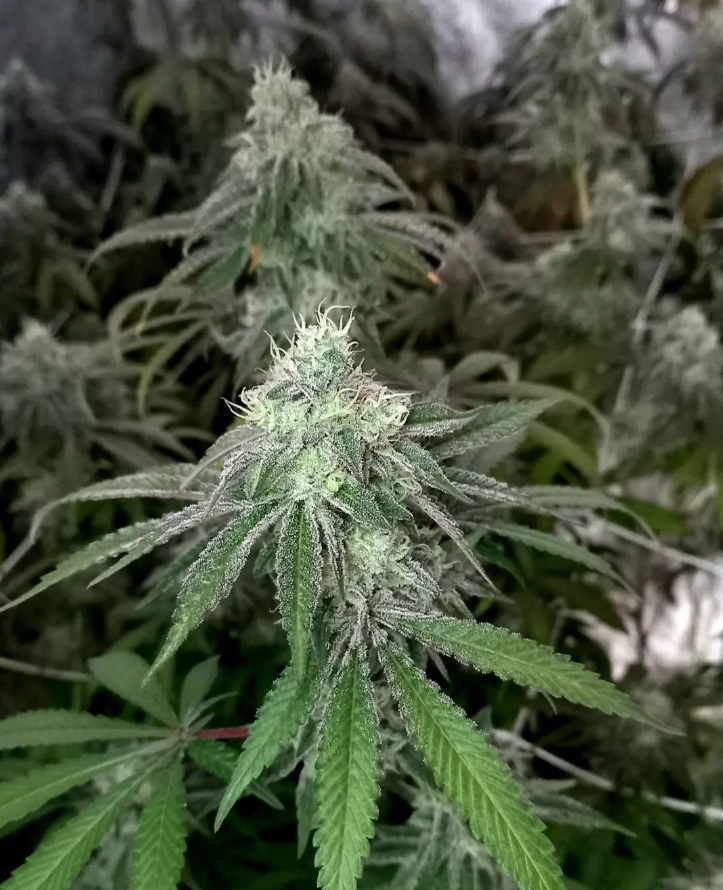
For me, passion and integrity come before money. That’s what guided me in selecting my strains and methods.
That being said, I do believe that it’s possible to maintain that integrity and quality while scaling up. It’s going to be more about the ways in which you work and how you approach things. I only feel like you can see a loss of quality when you’re scaling up too much and too fast, specifically without the right team. Ensuring the team has the same passion and dedication is essential to finding success when scaling up. In my experience, finding the right team is the hardest part if you don’t want to see your quality slowly dissipate.
There are currently two mindsets in the game. Those who came into it recently during the green rush, and those who’ve been into it for a while, throughout prohibition and all, and whose hearts are in the right place.
There’s nothing wrong with making money with passion, but those who have just come into the game tend to misunderstand the true nature of the plant. That’s when quality suffers: it gets slowly replaced by clever marketing, networking skills, and sales pitches. “Instagram weed”, as we call it: the flower looks good but doesn’t smoke well. It’s deeper than just QC and scale, it’s about the relationship with the plant. I think that Sister Vee is spot on for labeling cannabis as the human companion plant and that this aspect comes through (or not!) in the smoke.
I took a break from both testing and breeding following the death of my son. I struggled to keep that drive to leave a legacy, you know. I’m only just getting back to testing out some of the work I was doing about two years ago, playing with some Mendobreath/Jellybreath BX stuff, and looking to draw out some of those Mendobreath traits.
We’ve got a few exciting plans for the future, which include expanding on our grows. We also hope to expand our brand to include elements of the cannabis lifestyle and culture—things like apparel and events. We aim to establish ourselves as a proudly South African cult brand.
Amadeadly will always be a brand that stands for bravery, honesty, integrity, and quality- a school of thought, if you will.
So in the future, you can expect us to still stand up for the truth and integrity in cannabis. We’ll be there to fight the good fight until the end.

